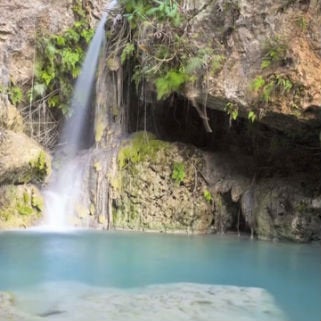
A dense fog settled on the mountains of La Visite National Park, but we had come to realize that it wouldn't last long. All day, the mist rolled in and out -- one minute, the mid-day sun would be beating down strong, and the next, the fog would move in, creeping closer until our visibility was reduced to a few feet. For most of us -- workshop instructors, chaperones, and youth participants -- this was our first visit to La Visite National Park, and the transient fog enhanced the magic of this remote place, perched high in the mountains of southern Haiti.
Frame of Mind empowers youth around the world to connect with their natural and cultural worlds through photography and visual storytelling. We had come to Haiti to work with a group of 20 talented teenagers from marginalized communities near the southern coastal city of Jacmel. These youth had previously worked with Panos Caribbean to create radio programming that tackled social issues, and were now the participants in Panos' first photography program to explore biodiversity and climate change, organized in partnership with Frame of Mind.
The location for this workshop was chosen strategically -- La Visite National Park is home to 67 bird species and 12 frog species, some of which are found nowhere else in the world. The 4,600 hectare park protects some of the last remaining pine and cloud forest in Haiti. For the people living within the park boundaries and in nearby Jacmel, the area is the source of clean water, plants used for food, medicine, and fuel, and protection from drought and floods. Of the many interconnected issues that were discussed, deforestation is one of the most critical -- less than 2 percent of Haiti's original forest cover remains today, due in part to the approximately 50 million trees felled each year to produce charcoal, the country's main source of cooking fuel. The fact that the participants had grown up in the vicinity of La Visite, and never been there, made this an even more significant trip.
Our first attempt at bringing the group to photograph in the park, in August 2011, had been thwarted by the heavy rains of Tropical Storm Emily, but it was now February 2012, in the dry season, and we were determined to make it there -- in part, to redeem ourselves to the participants, one of whom had told us, "It is my dream to go to La Visite park."
Leaving Jacmel, the road became progressively steeper and bumpier until, hours later, we finally reached the park. And it did not disappoint. Hiking for hours, we passed through pine forest, farmed land, and grassland; and encountered people who lived and worked there. We were guided by Anderson Jean, a Haitian biologist who has been studying the endangered wildlife of of La Visite for years, and by staff from Fondation Seguin, who work on conservation and reforestation efforts.
Led by local experts, learning about relevant environmental issues encouraged the participants to think critically about challenges and potential solutions. From there, they improved their visual and written communication skills through photography and writing, which provided a platform for sharing their knowledge and messages -- using camera techniques and creative elements to tell a story with an image. Collaborating with their peers to produce photo essays addressing the most pivotal issues was the final step, incorporating all of their newfound skills. As Nicole Simeon, Local Director of Panos Caribbean, puts it, "in this workshop, we tell them 'you are an actor, we are listening to you,' and from that point, it's extraordinary what they can do."
During our few days in the park, the participants soaked in their new surroundings. They ran ahead to explore waterfalls and streams, identify medicinal plants, and interview people to find out about their lives in the park. On our last night there, we set out on a frog walk through the forest. Outfitted with headlamps, the participants peered under leaves and rocks in search of krapo (frogs), no small feat considering that when we had first met them six months earlier, they were terrified of frogs and unaware that Haiti is home to several endangered, endemic species.
Afterwards, back in Jacmel, there was a palpable sense of pride as the youth trickled into the city's main library for the launch of their photo exhibit, dressed to the nines. The sizeable crowd included newspaper and radio reporters, educators, and government officials, but the participants seemed most proud to lead their family and friends around the room. Guiding them from one photo essay to another, reading captions and explaining details, they brought their experience full-circle by sharing it with their community.